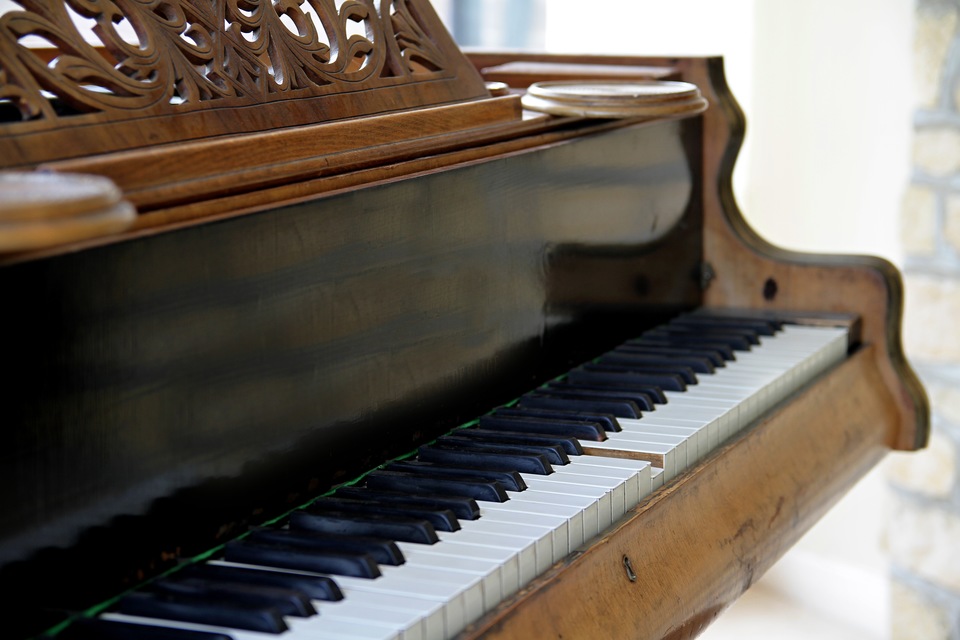The gentle melody of a piano fills the air as your fingers dance across its smooth keys. Suddenly, a sharp thud echoes through the silence—a sticky key has struck. This common issue can interrupt your performance and hinder your musical enjoyment. Fortunately, fixing sticky piano keys is not a daunting task. In this comprehensive guide, we will delve into the causes of stuck keys and provide step-by-step instructions on how to restore their functionality. By following these expert tips and techniques, you can bring your piano back to life and enjoy its enchanting melodies once more.

Image: www.youtube.com
Diagnosing the Cause of Sticky Piano Keys
Before embarking on repairs, it’s essential to identify the underlying cause of the sticky keys. Several factors can contribute to this issue, including:
Dirt and Debris Accumulation
Over time, dust and other particles can accumulate on the key mechanism, causing it to stick. Food crumbs, spills, and even pet hair can find their way inside the piano and interfere with key movement.
Misaligned Keys
Improper installation or rough handling can result in misaligned keys. When this occurs, they may collide with neighboring keys or the keybed, preventing them from traveling smoothly.

Image: www.modernpiano.com
Moisture and Temperature Fluctuations
Sudden changes in humidity or temperature can cause the wooden components of the piano to expand or contract, leading to misalignment and sticking keys.
Sticky Keybed
The keybed, the surface that the keys strike when played, can become sticky due to spills, adhesives, or a buildup of dirt. This resistance prevents the keys from returning to their resting position.
Step-by-Step Guide to Repairing Sticky Piano Keys
With a clear understanding of the potential causes, you can now move on to the repair process. Follow these steps carefully to restore the functionality of your piano keys:
1. Gather Necessary Tools
Before you start, gather the following tools: a soft cloth, a vacuum cleaner with a brush attachment, tweezers, a flat-head screwdriver, and key leveling shims (optional).
2. Clean the Keys
Use a soft cloth to wipe away any visible dirt or debris from the keys. Vacuum the area around the keys, paying attention to the spaces between them and the keybed. Use tweezers to remove any stubborn particles.
3. Check for Alignment
Observe the alignment of the sticky keys. If they appear misaligned, consult a piano technician for professional assistance, as this may require specialized tools and adjustments.
4. Lubricate the Action
If the keys are aligned correctly, apply a small amount of piano key lubricant to the metal contact points of the action. Avoid over-lubricating, as this can attract dirt and worsen the problem.
5. Address Keybed Stickiness
For sticky keybeds, carefully wipe the surface with a clean cloth dampened with a mild detergent solution. Avoid using excessive moisture, as this can damage the felt.
6. Regulate Key Dip
If the sticky keys are exhibiting a shallow or deep key dip, use key leveling shims to adjust the height of the individual keys. This ensures an even and consistent response across the entire keyboard.
Tips and Expert Advice for Preventing Sticky Piano Keys
Once your piano keys are functioning smoothly, preventive measures can help minimize the risk of future sticking issues:
Regular Cleaning and Maintenance
Schedule regular cleanings and maintain proper humidity levels in the room where the piano is stored. This helps prevent dirt from accumulating and reduces the impact of temperature and humidity fluctuations.
Protect from Spills and Pet Hair
Cover the piano when not in use to prevent dust and debris from entering. Keep pets away from the instrument to minimize pet hair buildup.
Professional Tuning and Regulation
Regular professional tuning and regulation ensure that the piano is in optimal playing condition. This includes checking the alignment and leveling of the keys to reduce the chances of sticking.
Frequently Asked Questions (FAQs)
Q: Can I fix sticky piano keys myself?
A: Yes, following the steps outlined in this guide, you can attempt to repair minor sticking issues yourself. However, for more complex problems or misaligned keys, it’s advisable to seek professional assistance.
Q: What should I avoid when repairing sticky piano keys?
A: Avoid using harsh chemicals or soaps, which can damage the keys and action. Do not over-lubricate the action, as this may attract dirt. If you encounter significant resistance or misalignment, do not force the keys open or closed.
Q: How often should I clean my piano keys?
A: Regular cleaning is crucial to maintaining the functionality of your piano. Aim to clean the keys and surrounding area at least once a month, or more often if the instrument is frequently used or exposed to dusty environments.
How To Fix Sticking Piano Keys
Conclusion
By following the instructions provided in this comprehensive guide, you can effectively fix sticky piano keys and restore the instrument to its optimal playing condition. With a little patience and care, you can enjoy the beautiful melodies your piano has to offer once again. Remember that regular maintenance and expert advice can help prevent future sticky keys, ensuring your piano remains a cherished source of musical inspiration.
Are you passionate about the art of piano performance? Share your experiences and ask questions in the comments section below. Let’s engage in a lively discussion about piano maintenance and discover the secrets to creating unforgettable musical moments.